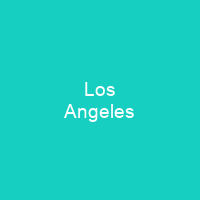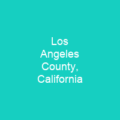Los Angeles: The Heart of Southern California
Imagine a bustling metropolis that’s home to over 3.8 million people, where the sun never seems to set and dreams are made. Welcome to Los Angeles, the largest city in California and the commercial, financial, and cultural center of Southern California.
The History of LA
Los Angeles has a rich history that dates back centuries. Originally inhabited by the Tongva people, it was claimed by Spain in 1542. The area became part of Mexico in 1821 and then the United States after the Mexican-American War in 1848. On September 4, 1781, a group of settlers founded El Pueblo de Nuestra Señora la Reina de los Ángeles, which is now known as Los Angeles.
Geography and Climate
Picture the city sprawling across 469 square miles, with its diverse landscape ranging from flat plains to hilly terrains. The highest point in LA is Mount Lukens at 5,074 feet, while the Los Angeles River flows through it, primarily for flood control.
Economy and Culture
Los Angeles is a powerhouse of creativity and commerce. It’s home to Hollywood, the film industry capital of the world. The city boasts a gross metropolitan product of over $1 trillion, making it one of the largest economic centers in the United States. LA hosted the Summer Olympics twice—once in 1932 and again in 1984—and will do so once more in 2028.
Demographics
The city’s population is incredibly diverse, with a mix of White, Asian, Black, Hispanic, and other ethnicities. According to the 2020 census, 37.3% of LA residents are White, while 15.7% are Mixed, 12.0% are Asian, 8.5% are Black, and 1.2% are Native American. The largest foreign-born groups include Mexicans, Filipinos, Salvadorans, and Guatemalans.
Religion and Beliefs
Los Angeles is a melting pot of religions, with Christianity being the most prevalent. However, other faiths like Judaism, Buddhism, and atheism are also widely practiced here.
Housing and Homelessness
The city faces significant challenges in housing affordability, with over 41,000 homeless people as of January 2020. Skid Row is the epicenter of homelessness, largely due to a lack of affordable housing and substance abuse issues.
Transportation
Los Angeles’ transportation network is vast but often congested. The city has an extensive freeway system, with major highways like Interstate 5, Interstate 10, and U.S. Route 101 connecting it to other cities. Public transit options include the Los Angeles Metro Rail and Metrolink commuter rail.
Airports and Ports
The city has several airports serving different areas, including LAX for international travel and Ontario International Airport for domestic flights. The Port of Los Angeles is a major hub for container shipping, occupying 7,500 acres with 43 miles of waterfront.
Conclusion
Los Angeles is more than just a city; it’s a vibrant tapestry of cultures, industries, and dreams. From its rich history to its diverse population and bustling economy, LA continues to evolve while maintaining its unique character. As the largest city in California, Los Angeles remains at the forefront of innovation and creativity, making it a must-visit destination for anyone seeking adventure or inspiration.

You want to know more about Los Angeles?
This page is based on the article Los Angeles published in Wikipedia (retrieved on March 10, 2025) and was automatically summarized using artificial intelligence.





